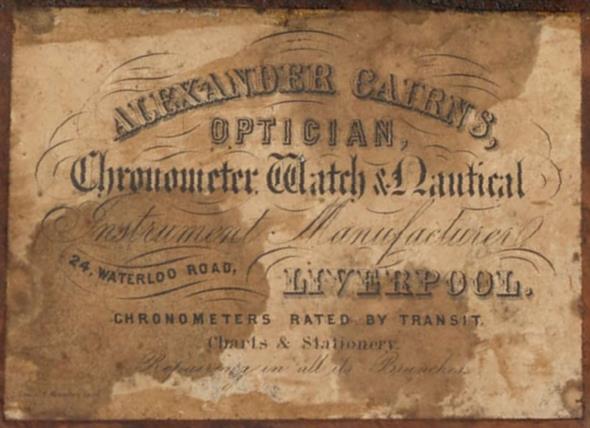
NavList:
A Community Devoted to the Preservation and Practice of Celestial Navigation and Other Methods of Traditional Wayfinding
From: Frank Reed
Date: 2024 Jan 25, 07:57 -0800
I wrote previously:
"navigators did take chronometers to "clock shops" for rating. It wasn't a rare thing".
And Lars Bergman, you replied:
"This is very interesting; I have never, yet, came across such information. Could you please provide some evidence or references to confirm this statement."
As you know, I'm a huge fan of using ships' logbooks as evidence for real celestial navigation practice. It's primary source evidence, so very different from the "advice" evidence in navigation manuals, which can be hypothetical, even imaginary, and often decades obsolete. So I deeply appreciate your use of this type of evidence in your recent posts. One problem with logbook evidence, which we all eventually discover, is that the authors usually end all entries at port call. What did they do in port? If we're lucky, the logbook author made some notes, or there may be a separate "journal" that accompanies the official logbook (also usually a better source for navigation evidence, too, since they're not constrained by the moderate "formality" of the official logbook).
I have kept no records on evidence for chronometer rating over the years. I suppose I should start doing that. But the best evidence for chronometer rating that I have seen has come from advertising. There are actual paid advertisements in publications as well as labels affixed inside the cases of sextants and chronometers from instrument shops. And we often see the phrase "Chronometers Rated". It's listed as a service offered by the shop. Advertising is not rock-solid evidence. It describes a service or product that someone "aspires" to provide or sell. It's not a guarantee. But if that service is advertised for decades, each time consuming precious space in a small, paid advertisement, then we have evidence that the service actually sold and was used by chronometer owners. Those two simple words, "Chronometers Rated", tell the tale.
As I say, I haven't kept records from proper research in museum archives on this specific topic. Last night I "cheated" and tried something simple. I "googled" the phrase. There were many hits. I'm attaching an image of just one, from an instrument shop label inside a sextant case from the USS Constitution museum. The sextant appears to date from about 1850-75. Chronometers Rated! This one, like many perhaps dating from an earlier decade (written and printed in an earlier decade at least) suggests that the rating tests will be done by a transit telescope, which would have produced excellent results. In later decades, perhaps shop owners bragged about their telegraphic signals from famous observatories, which would also have been excellent for chronometer rating.
Speaking of the cost of advertising, there is one other advantage of do-it-yourself chronometer rating while in port. It's cheaper! If a navigator with some skill has time to kill, and especially if there's a source for time signals, like a time ball, then rating a chronometer with one's own sights will save a few dollars.
Lars, you added:
"I am aware of the difference between a chronometer's error (at a certain time), and its rate."
Of course you are, and I hope you didn't think I was condescending to you. You know this material inside and out. But this is a public forum, and we --you, me, all of us-- are "orating" to the forum and writing for the crowd when we post messages here, so I try to make my messages informative in that context. I probably should have included a note that "I know you know this" but that message was getting too long, and I decided to just "get on with it". So off it went to the printers, imperfect but hopefully informative. :)
Thanks for posting those pages from a Finnish/Russian vessel in port in Saint John NB. They were in port for nearly a month? This could easily be a case where the "navigator" might well have used a high-power inverting scope and an artificial horizon to do some of the work (I haven't actually taken the time to look at the documents so if that's obviously not the case, I apologize for jumping the gun!).
Frank Reed
Clockwork Mapping / ReedNavigation.com
Conanicut Island USA







